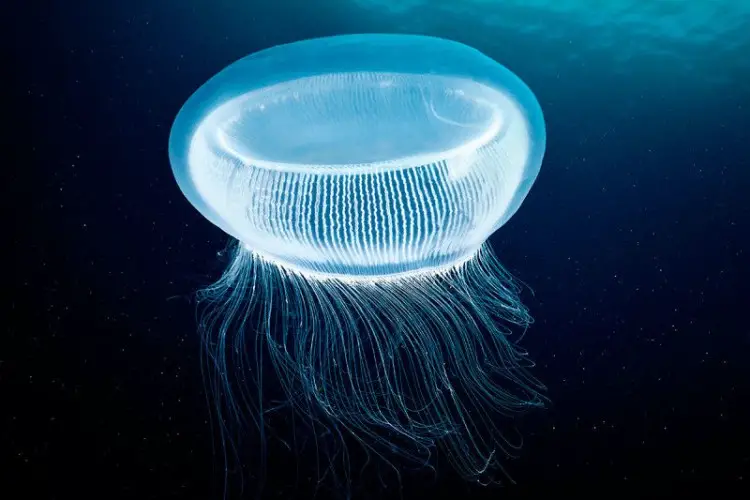Advanced Polariton Laser From Fluorescent Jellyfish Proteins
Submitted by Richan Beran on Monday, August 22, 2016 - 15:51.

A laser is useful because it produces light that is not only of essentially a single frequency but also coherent, with the light waves all moving along in unison.
The laser is just like radio waves in the way that it can also carry information. The laser is a is a device that a beam of light that is both scientifically and practically of great use because it is coherent light.
A new innovation was born in relation to the laser technology, this innovative invention was called the polariton laser.
The polariton laser was fluorescent proteins from jellyfish that were grown in bacteria. This was the first-ever innovative laser that was made through the Jellyfish.
A new study said that this laser is believed to be implanted in the human body for medical application.
According to a report by LiveScience, Stéphane Kéna-Cohen, an assistant professor in the Department of Engineering Physics at Polytechnique Montréal in Canada, who has worked on organic polariton lasers but was not involved with the new study, said that the overcomes a major problem that has plagued previous designs.
Kéna-Cohen added that the new innovative laser allows operating for a simpler implementation. BUT cohen confirms tat the laser will still face challenges before it will be useful.
It will still undergo some of the processes to prove the effectiveness of this innovation, but the researchers said that the laser model is useful for investigating fundamental questions in quantum physics.
The new study will be helpful for the field of optical computing. According to Malte Gather, a professor in the School of Physics and Astronomy at the University of St. Andrews in Scotland and one of the laser's inventors, a tiny laser based on biomaterials could also potentially be implanted in the human body for medical applications.
Furthermore, he said that that fluorescent proteins have been used as a marker in living cells or living tissue before, but now the researchers have started using them as a material. "This work shows for the first time that their molecular structure is actually favorable for operation at high brightness — as required, for example, for turning them into lasers."
Researchers said that the fundamental physics suggests design improvements should eventually allow polariton lasers with considerably lower thresholds than conventional ones, which would allow them to be much more efficient and compact.
The researchers confirmed that the laser will be more efficient and than the compact and could open up research avenues in quantum physics and optical computing.
Jellyfish proteins just happened to be the answer for a new innovative creation that can help the human kind.
